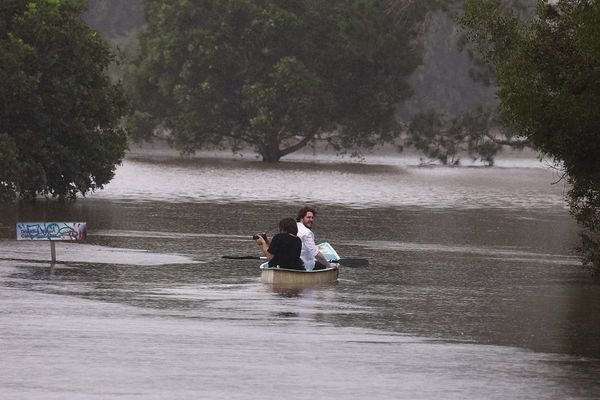
The H-1B visa program has long been a lightning rod in debates about immigration and employment.
Designed to bring the best and brightest talent from around the world to the United States, the program has been hailed as a driver of innovation; however, it is often also criticized for its impact on the domestic labor market.
The H-1 visa debate
The H-1B visa controversy is complex. Addressing it requires acknowledging the historically multifaceted nature of the problem—and the solutions that begin squarely within America’s education system in 2025.
The U.S. grants about 65,000 regular H-1B visas annually, plus 20,000 more for foreigners with a graduate degree from a U.S. academic institution. President Donald Trump strongly backs the H-1B program, as do Tesla CEO Elon Musk and other business leaders.
The concept of attracting the best and brightest is a quintessentially American one. It’s also one of the most Trumpian ideas imaginable: Recruit top talent to build the most formidable workforce and drive economic growth.
America has thrived on its ability to attract exceptional minds, from scientists to software engineers, and the H-1B visa program plays a role in that. However, the conversation cannot stop at “bring in the best.” We must also recognize and prioritize new ways to grow the untapped potential at home.
America's failed talent pipeline
When I served as Deputy Assistant Secretary for Academic Programs in the State Department under the first Trump administration, the president repeatedly stated that he wanted to bring in the best and brightest from around the world.
Solving merit-based immigration, however, is not the same as failing to actually prepare our students domestically for the jobs that exist and will exist in their own backyards.
America’s talent pipeline has glaring inefficiencies. Take high schools, the last universal choke point before young people enter adulthood. High schools are failing to prepare students for the real jobs that exist—both now and in the future. Jobs are going vacant in everything from AI to EVs to semiconductors to health care.
Many high school graduates leave without a clear understanding of the opportunities available to them. They’re rarely exposed to the kinds of careers that will emerge two or three years down the line or to the training pathways that could lead them there. Instead, they’re often funneled into a binary choice: a traditional four-year college degree or a low-skill job with limited upward mobility.
This paradigm is outdated and harmful.
The push toward college for all has many students saddled with debt and degrees they may never use, while local industries struggle to fill skilled positions.
The numbers show a real disservice to our students, with 40% of people saddled with student loan debt having no four-year degree. At the same time, those who don’t pursue higher education are often left with few viable options.
Connecting students with employers
In the gulf between a minimum-wage job standing at a cash register and a four-year degree lies a vast array of possibilities—apprenticeships, trade programs, certifications, and community college pathways—that remain under-promoted.
What’s missing is a robust system to bridge the gap between education and employment. We need new information flows and a breaking down of silos to ensure students know what opportunities exist and how to prepare for them.
For example, the CHIPS Act in Ohio has spurred investment in semiconductor manufacturing, creating high-tech jobs like chip fabrication technicians and equipment maintenance specialists.
These roles offer competitive salaries and benefits—and, of course, they are so too often overlooked, because students don’t even know they exist.
For its 2024 Talent Trends report, the Society for Human Resource Management wrote that “75% of organizations struggled to fill full-time positions in the last year.”
It added, “Given that there are upwards of 8.7 million open jobs in the U.S., this problem can be attributed to emerging professionals facing both technical- and power-skill-based roadblocks to entering the workforce.”
Initiatives like Tallo in South Carolina, which helps match students with career pathways, are promising examples of solution providers in this scenario. These systems use data to connect students directly with employers and training programs while still in school, creating a more efficient pipeline from school to work.
Scaling such models nationally could revolutionize how we approach education and employment.
Rethinking education and career preparation
Governors and the U.S. Education Department have a critical role to play in this transformation. High schools must be reimagined as career centers, not just academic institutions.
But this is no easy lift. It requires a cultural shift, but also tangible policy changes: mandating career counseling, integrating local labor market data into curricula, and incentivizing partnerships between schools, businesses, and community colleges.
The goal should be to provide students with a clear understanding of their options and a roadmap to success, whether that’s through a four-year degree, a trade, or a certificate program.
The H-1B visa debate isn’t just about immigration policy; it’s a reflection of how we value and cultivate talent. If we want to remain a global leader, we must not only attract the best from abroad but also invest in the best within our borders.
Fixing the domestic talent pipeline is not a zero-sum game; it’s a complementary effort that benefits everyone.
By rethinking education and career preparation, we can ensure that students in every community have the tools to thrive—and that America remains a magnet for innovation and opportunity.
The opinions expressed in Fortune.com commentary pieces are solely the views of their authors and do not necessarily reflect the opinions and beliefs of Fortune.
Read more:
- H-1B visa debates roil U.S.-India relations ahead of Trump-Modi meeting. Here’s what needs to change—on both sides
- What Donald Trump and Elon Musk backing H-1B visas means to me as an immigrant entrepreneur
- As the H-1B visa debate tears MAGA apart, Indian-Americans are shaping America’s future
- Trump’s MAGA base is turning on Elon Musk after he said he wants to import more skilled workers
- ‘A sense of panic’: Immigrant AI talent worry Trump could make an already broken visa system worse







